![Vellore Institute of Technology - [VIT University]](https://images.collegedunia.com/public/college_data/images/appImage/1614064870cover.jpg?h=240&w=1000&mode=crop)
Bachelor of Science [B.Sc] {Hons.} (Agriculture) From VIT Vellore, Vellore
| Year | 1 | 2 | 3 | 4 |
|---|---|---|---|---|
| Tution fees | ₹110000 | ₹110000 | ₹110000 | ₹110000 |
| Other fees | ₹3000 | - | - | - |
| Total Year Wise fees | ₹1.13 Lakhs | ₹1.10 Lakhs | ₹1.10 Lakhs | ₹1.10 Lakhs |
VIT Vellore Upcoming Application Dates 2024
Expired Events
| Events | Dates |
|---|---|
| Application Timeline (NRI) | Dec 06, 2023 - Jun 30, 2024 |
| Application timeline (B.Sc Agriculture) | Jan 29, 2024 - May 31, 2024 |

Eligibility Criteria
Aspirants seeking admission to the Program should meet the following criteria as
Academic Requirement:
- Candidates who have studied in regular, full time and formal education alone are eligible to apply
- The applicant for admission should be a Resident Indian National
- A pass with minimum overall aggregate of 70% and with Physics, Chemistry and Mathematics or Physics, Chemistry and Biology or Agriculture as subjects in the qualifying Examination or intermediate or any equivalent examination from a recognized Board/University
- A pass with minimum overall aggregate of 60% and with Physics, Chemistry and Mathematics or Physics, Chemistry and Biology or Agriculture as subjects in the qualifying Examination or intermediate or any equivalent examination from a recognized Board/University for the following categories:
- Candidates belonging to SC/ST community
- Candidates hailing from Jammu & Kashmir / Ladakh and the North Eastern states of Arunachal Pradesh, Assam, Manipur, Meghalaya, Mizoram, Nagaland, Sikkim and Tripura.
Age Limit:
Candidate should have born on or after 01.07.2003
Course Details
Category – 1
| Tuition Fee (Per Annum) | INR 1,10,000 |
| Caution Deposit (Refundable) (One time payment) | INR 3,000 |
| Total fees to be paid for the first year | INR 1,13,000 |
Category – 2
| Tuition Fee (Per Annum) | INR 1,95,000 |
| Caution Deposit (Refundable) (One time payment) | INR 3,000 |
| Total fees to be paid for the first year | INR 1,98,000 |
Category – 3
| Tuition Fee (Per Annum) | INR 2,25,000 |
| Caution Deposit (Refundable) (One time payment) | INR 3,000 |
| Total fees to be paid for the first year | INR 2,28,000 |
Bachelor of Science [B.Sc] {Hons.} (Agriculture) Comparison
| VIT Vellore | SRMIST | |
|---|---|---|
| Reviews Rating | ||
| Cost To Study | Total Fees ₹443000 (4 Years ) Hostel Fees ₹133700 | Total Fees ₹600000 (3 Years ) Hostel Fees ₹29500 |
| Ranking | - | - |
| Highest Salary | ₹8800000 | ₹5200000 |
| Average Salary | ₹990000 | ₹750000 |
| General Course Details | Duration - 4 Years Course Offered - Full Time Mode - Full Time Degree Type - On Campus Course Level - Graduation Course Credential - Degree | Duration - 3 Years Course Offered - Full Time Total Seats - 300 Mode - Full Time Degree Type - On Campus Course Level - Graduation Course Credential - Degree |
| Eligibility | 10+2 | 10+2 |
Course Finder
Search from 20K+ Courses and 35+ Streams
Popular Streams:
Why To Join VIT Vellore - Reviews & Rating
Most Popular Tags
Likes
- I liked the infrastructure and the college life it was been very excellent
Dislikes
- If we order any thing except Domino's we should goo to the main gate .
Course Curriculum Overview:
The faculty members are nice it was been good teaching with a PhD experience of 10 years faculty members. They give the clear about the course structure and give a nice teaching of them. Their teaching life was excellent
Course Curriculum Overview:
I have opted for this course because it is related to agriculture and there is a lot of scope for it. Teachers are well educated and their way of teaching is brilliant. A schedule is given at the starting of the session and the whole thing goes on according to that schedule.
Course Curriculum Overview:
VIT syllabus is more related to practical application in work with different methods of teaching. All teachers here are masters and PhD holders in qualified university. The course curriculum is related to ICAR. The course curriculum is easy for students interested in agriculture. Faculty get a lot of interest to teach the subject of the syllabus. Faculty give notes on agriculture and allied sectors. Faculty teach by PPT method for beginners, which is very useful. I choose this course because agriculture is one of the major department in India. Now it is developing well, and also it is marketable. It is also easy to get a job in this course compared to others. In VIT college, a lot of campus events and festivals conducted. Pity Gravitation and Hackathons are the major popular events in VIT college. VIT conducts all campus interviews online, and the college provides opportunities for pot painting to students.
Course Curriculum Overview:
Course syllabus is restricted to ICAR norms and follows the same as other agri colleges But the way of teaching and use of aids differs faculties were too good .
Course Curriculum Overview:
It has been quite good with faculty side they all are highly graduated in some famous IITs so we may not worry much about teaching techniques of faculty. There will be 3 phases. Cat 1, Cat 2, Fat will be final sem for 100 marks and cat 1 and cat 2 for 50 marks.
Fee Structure And Facilities:
In our course (B. SC AGRICULTURE) We have three categories of fee structure based on the IPE marks that we have got they call us for the counseling and based on the ranking based on it they separate us in each category. category 1 will be 96,000 per year.
Fee Structure And Facilities:
In the first year of my course, I paid 15000 rupees. , in the second year I paid almost 13000 rupees, and in the 3rd year, I'll have to pay almost 15000 less or more. Though it is an undertaking of government college, the fees are really high for the middle class and lower class students.
Compare Popular Colleges With VIT Vellore


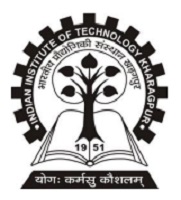
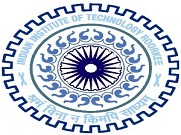
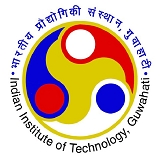



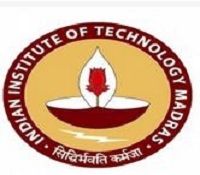

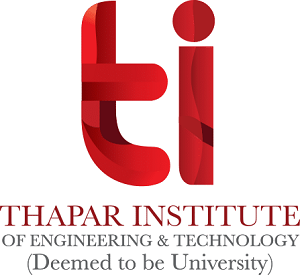




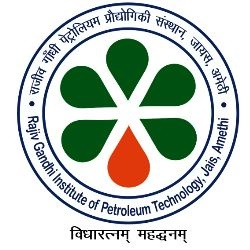
VIT Vellore Latest News
Weightage of Academics and Work Experience in CAT 2024


CAT Logical Reasoning Preparation 2024, Take Blood Relations Quiz


How Much Does an NRI (Non-Residential Indian) Need to Score in JEE Mains to Secure a Seat in NITs

Discover More Colleges
![Adhiparasakthi College of Engineering Arcot - [APCE]](https://images.collegedunia.com/public/college_data/images/appImage/55403_APCE-001.png?h=111.44&w=263&mode=stretch)

![Global Institute of Engineering and Technology - [GIT]](https://images.collegedunia.com/public/college_data/images/appImage/13558_GIT_New.jpg?h=111.44&w=263&mode=stretch)

![Thanthai Periyar Government Institute of Technology - [TPGIT]](https://images.collegedunia.com/public/college_data/images/appImage/15458_TPGIT_APP.jpg?h=111.44&w=263&mode=stretch)



![Bharathidasan Engineering College - [BEC]](https://images.collegedunia.com/public/college_data/images/appImage/13054_BEC_New.jpg?h=111.44&w=263&mode=stretch)

![Sri Nandhanam College of Engineering and Technology - [SNCET]](https://images.collegedunia.com/public/college_data/images/appImage/15235_SRINANDHANAM_APP.jpg?h=111.44&w=263&mode=stretch)


![Vellore Institute of Technology - [VIT University]](https://images.collegedunia.com/public/college_data/images/logos/1604923303Logo.jpg?h=71.17&w=71.17&mode=stretch)


 “
“







.jpg?h=90.56&w=161&mode=stretch)
.jpg?h=90.56&w=161&mode=stretch)
.jpg?h=90.56&w=161&mode=stretch)
![VIT Business School - [VITBS]](https://images.collegedunia.com/public/college_data/images/logos/159775539949755996101568568649397877221633486954692608n.png?h=72&w=72&mode=stretch)
![Vellore Institute of Technology - [VIT]](https://images.collegedunia.com/public/college_data/images/logos/1520330799lgoedt1.png?h=72&w=72&mode=stretch)

![VIT University - [VIT- AP]](https://images.collegedunia.com/public/college_data/images/logos/1615969516Screenshot20210317134244.png?h=72&w=72&mode=stretch)





![Thapar Institute of Engineering and Technology - [Thapar University]](https://images.collegedunia.com/public/college_data/images/logos/15900570111590056771Newlogotu.png?h=72&w=72&mode=stretch)
![Kalinga Institute of Industrial Technology - [KIIT]](https://images.collegedunia.com/public/college_data/images/logos/1394450211Kalinga Institute of Industrial Technology.png?h=72&w=72&mode=stretch)
![Lovely Professional University - [LPU]](https://images.collegedunia.com/public/college_data/images/logos/1705314547logo.png?h=72&w=72&mode=stretch)


![IIT Madras - Indian Institute of Technology - [IITM]](https://images.collegedunia.com/public/college_data/images/logos/1434977143jpjpjpjpj.jpg?h=72&w=72&mode=stretch)


![SSN College of Engineering - [SSNCE]](https://images.collegedunia.com/public/college_data/images/logos/1472103749ssn logo.png?h=72&w=72&mode=stretch)



![SRM Institute of Science and Technology - [SRMIST]](https://images.collegedunia.com/public/college_data/images/logos/15807262501569304335phpHattQO.png?h=72&w=72&mode=stretch)
![Chandigarh University - [CU]](https://images.collegedunia.com/public/college_data/images/logos/1613996461logo1.jpg?h=72&w=72&mode=stretch)



Comments